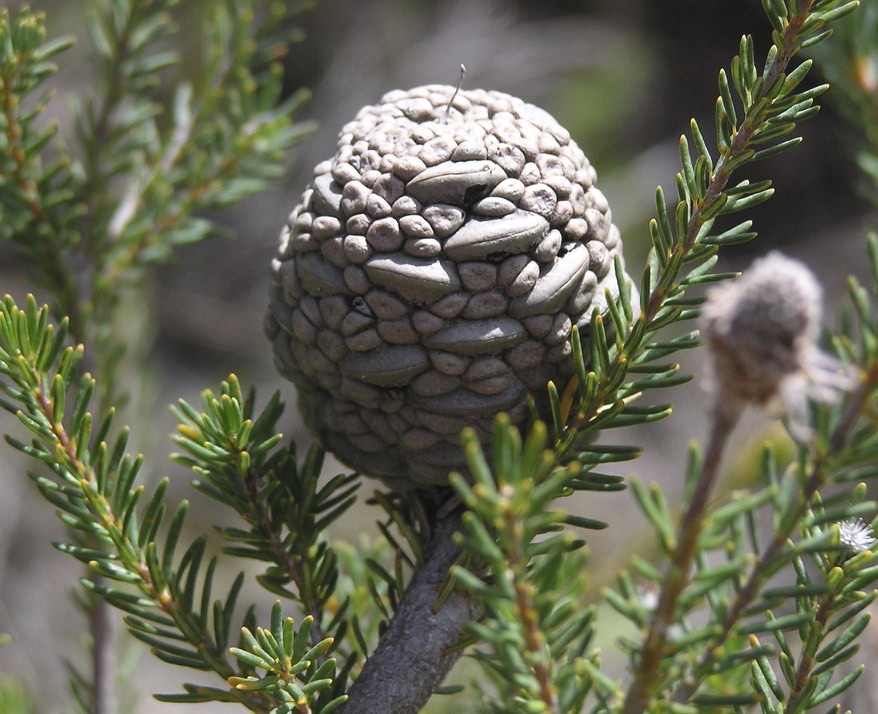Banksia Pulchella on:
[Wikipedia]
[Google]
[Amazon]
 ''Banksia pulchella'', commonly known as teasel banksia, is a species of small shrub that is
''Banksia pulchella'', commonly known as teasel banksia, is a species of small shrub that is
 ''Banksia pulchella'', commonly known as teasel banksia, is a species of small shrub that is
''Banksia pulchella'', commonly known as teasel banksia, is a species of small shrub that is endemic
Endemism is the state of a species being found in a single defined geographic location, such as an island, state, nation, country or other defined zone; organisms that are indigenous to a place are not endemic to it if they are also found elsew ...
to the south-west of Western Australia. It has smooth grey bark, linear leaves and golden-brown flowers in short, cylindrical heads and inconspicuous follicles.
Description
''Banksia pulchella'' is a shrub that typically grows to a height of and has smooth grey bark but does not form alignotuber
A lignotuber is a woody swelling of the root crown possessed by some plants as a protection against destruction of the plant stem, such as by fire. Other woody plants may develop basal burls as a similar survival strategy, often as a response t ...
. The leaves are narrow linear, long and about wide on a petiole long. The leaves have a sharp point on the tip. The flowers are golden-brown with bright yellow styles and are arranged in short cylindrical heads long and wide at flowering. There are small involucral bracts at the base of the head but that fall off as the flowers develop. The perianth
The perianth (perigonium, perigon or perigone in monocots) is the non-reproductive part of the flower, and structure that forms an envelope surrounding the sexual organs, consisting of the calyx (sepals) and the corolla (petals) or tepals when ...
is long and the pistil
Gynoecium (; ) is most commonly used as a collective term for the parts of a flower that produce ovules and ultimately develop into the fruit and seeds. The gynoecium is the innermost whorl of a flower; it consists of (one or more) ''pistils'' ...
long and hooked. Flowering occurs in January, March or May to October. The follicles are long, up to high and wide and inconspicuous, although the old flowers fall from the head.
Taxonomy and naming
''Banksia pulchella'' was first formally described by Robert Brown who published the description in ''Transactions of the Linnean Society of London
The Linnean Society of London is a learned society dedicated to the study and dissemination of information concerning natural history, evolution, and taxonomy. It possesses several important biological specimen, manuscript and literature colle ...
''. Brown's specimens were collected at locations along the south coast of Western Australia, but in 1981, Alex George chose the specimens that Brown collected at Lucky Bay
Lucky may refer to:
*An adjective of luck
Lucky may also refer to:
Film and television
* '' Lucky: No Time for Love'', a 2005 Hindi-language romance starring Salman Khan, Sneha Ullal, and Mithun Chakraborty
* ''Lucky'', a 2005 short film by Avi ...
as the lectotype
In biology, a type is a particular specimen (or in some cases a group of specimens) of an organism to which the scientific name of that organism is formally attached. In other words, a type is an example that serves to anchor or centralizes the ...
. The specific epithet
In taxonomy, binomial nomenclature ("two-term naming system"), also called nomenclature ("two-name naming system") or binary nomenclature, is a formal system of naming species of living things by giving each a name composed of two parts, bot ...
(''pulchella'') is from the Latin ''pulchellus'' meaning "pretty", probably referring to the flowers.
George placed ''B. oreophila'' in subgenus ''Banksia'', section ''Oncostylis'', series ''Abietinae''.
Distribution and habitat
Teasel banksia grows in tall shrubland andkwongan
Kwongan is plant community found in south-western Western Australia. The name is a Bibbelmun (Noongar) Aboriginal term of wide geographical use defined by Beard (1976) as
Kwongan has replaced other terms applied by European botanists such as ...
and occurs on the south coast of Western Australia from Culham Inlet in the Fitzgerald River National Park
Fitzgerald River National Park is a national park in the Shires of Ravensthorpe and the Jerramungup in Western Australia, southeast of Perth. The park is recognised on Australia's National Heritage List for its outstanding diversity of nativ ...
and east to Israelite Bay
Israelite Bay is a bay and locality on the south coast of Western Australia.
Situated in the Shire of Esperance local government area, it lies east of Esperance and the Cape Arid National Park, within the Nuytsland Nature Reserve and the Grea ...
.
Conservation status
This banksia is classed as "not threatened" by the Western Australian GovernmentDepartment of Parks and Wildlife
The Department of Parks and Wildlife (DPaW) was the department of the Government of Western Australia responsible for managing lands described in the ''Conservation and Land Management Act 1984'' and implementing the state's conservation and e ...
.Use in horticulture
Seeds do not require any treatment, and take 17 to 48 days togerminate
Germination is the process by which an organism grows from a seed or spore. The term is applied to the sprouting of a seedling from a seed of an angiosperm or gymnosperm, the growth of a sporeling from a spore, such as the spores of fungi, fer ...
.
References
{{Taxonbar, from=Q4856684 pulchella Eudicots of Western Australia Taxa named by Robert Brown (botanist, born 1773) Plants described in 1810